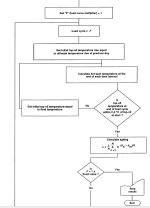cuky2000
Electrical
- Aug 18, 2001
- 2,133
There are difference between IEEE STD and IEC STD associated to power transformer rating as shown on the table below.
For a 100MVA unit with 30 degree C average ambient temperature in 24 hrs. What should be the maximum rating if specified per IEEE or the same maximum rating if designed based on the IEC std.?

For a 100MVA unit with 30 degree C average ambient temperature in 24 hrs. What should be the maximum rating if specified per IEEE or the same maximum rating if designed based on the IEC std.?









